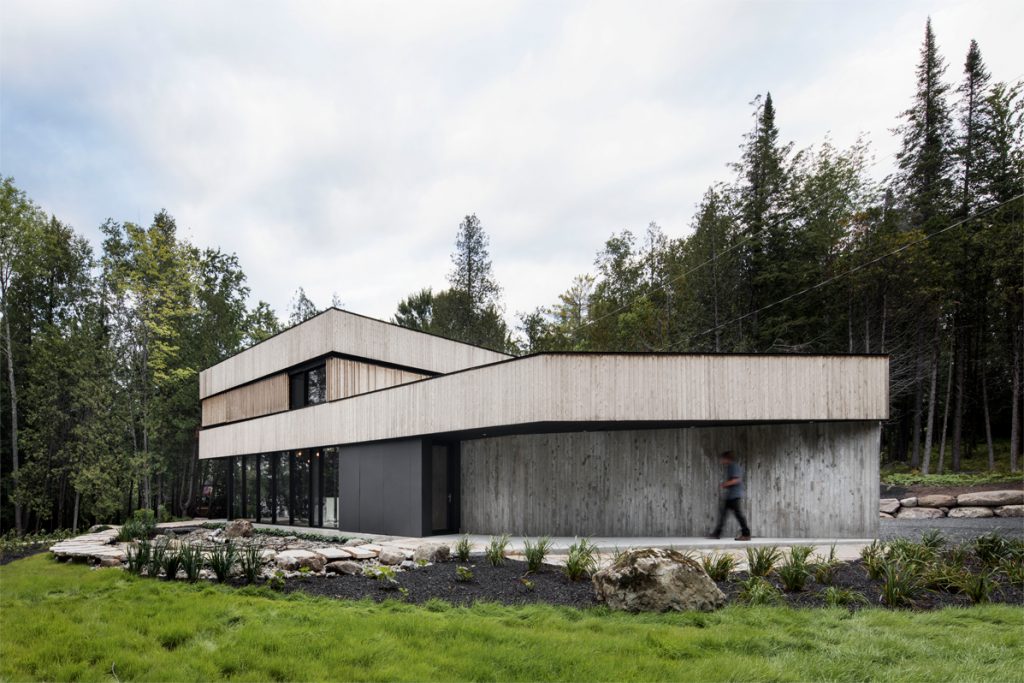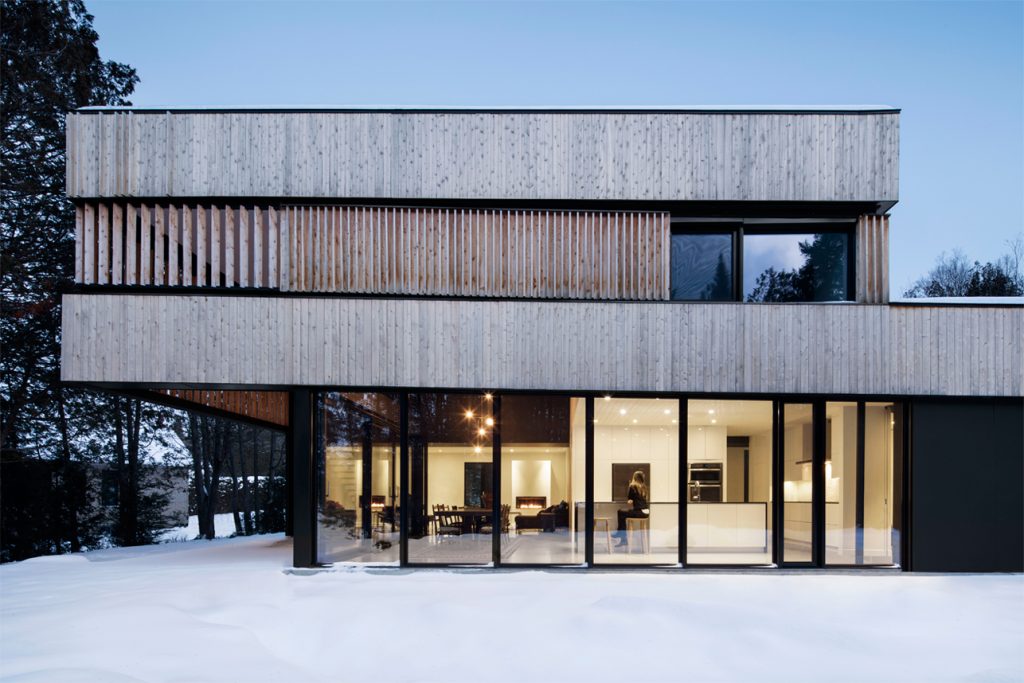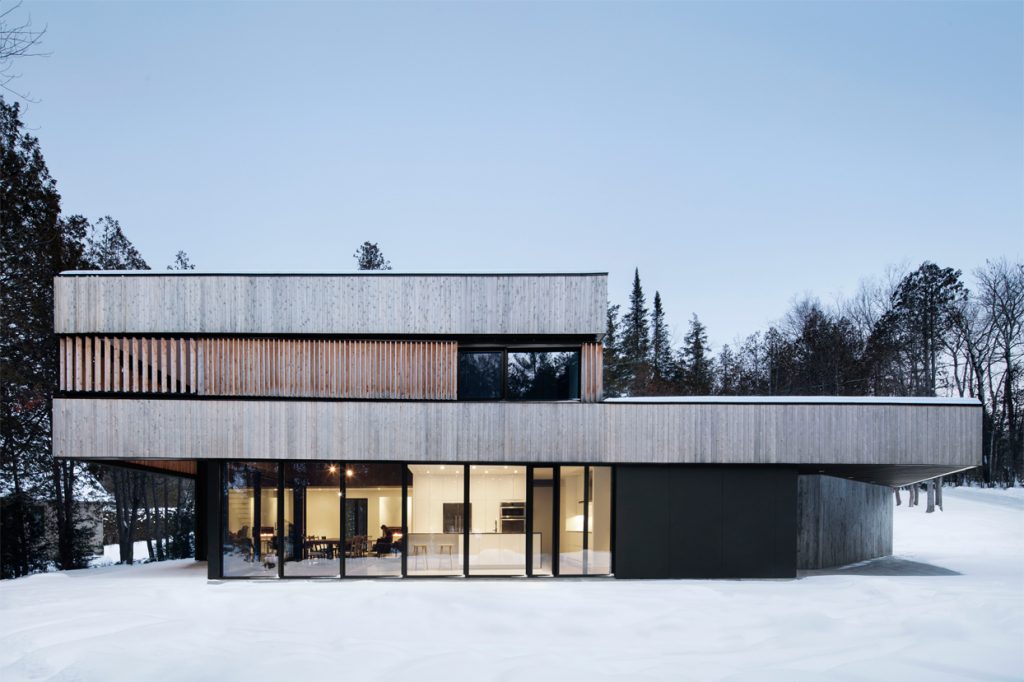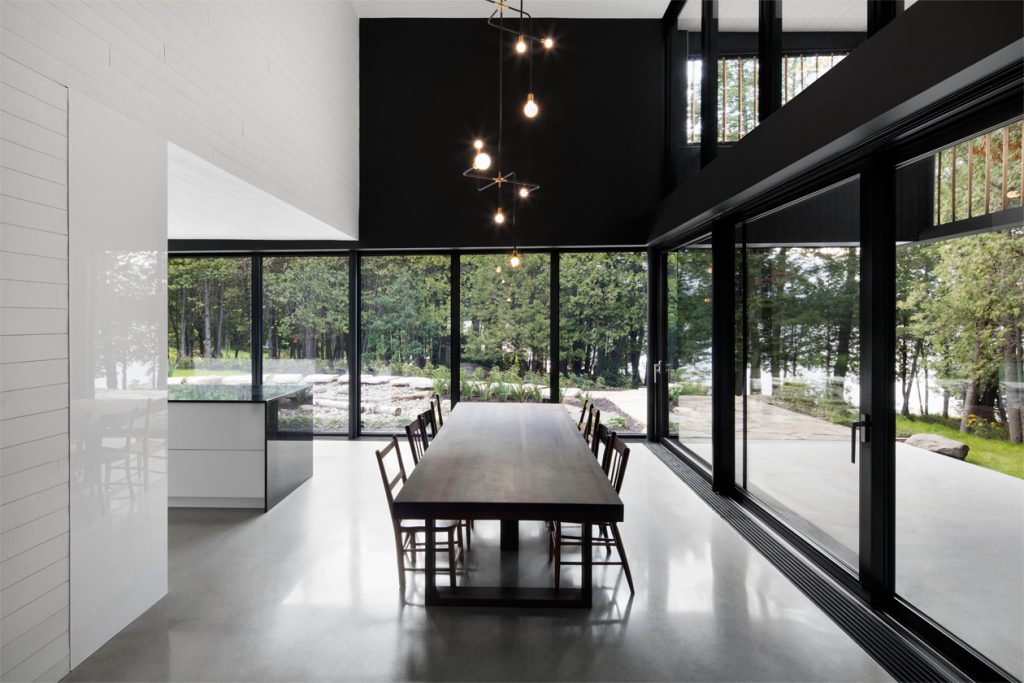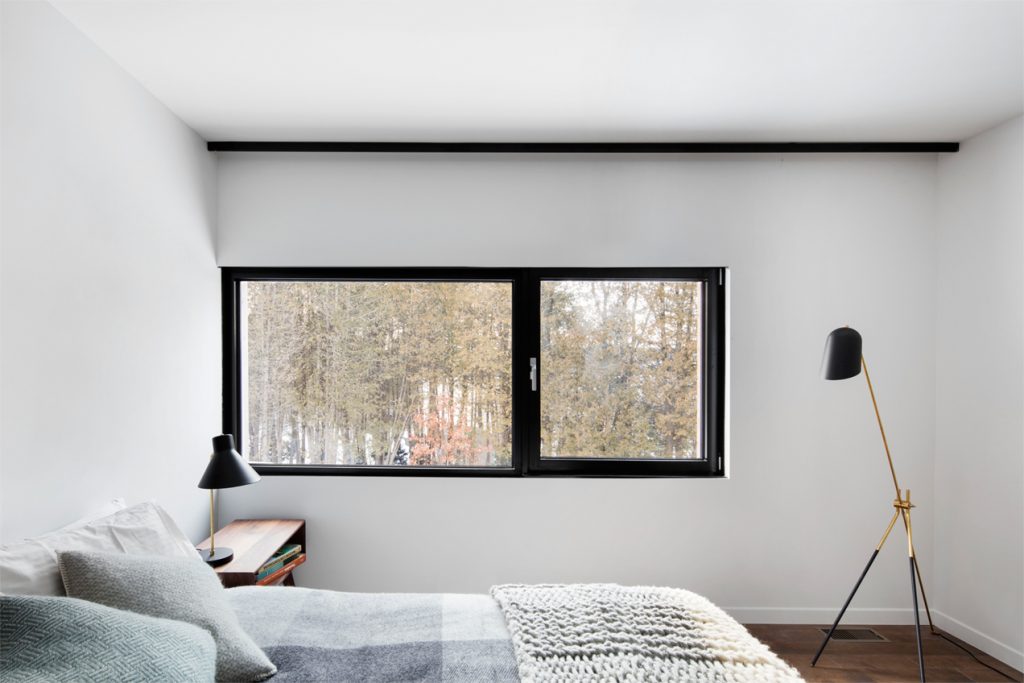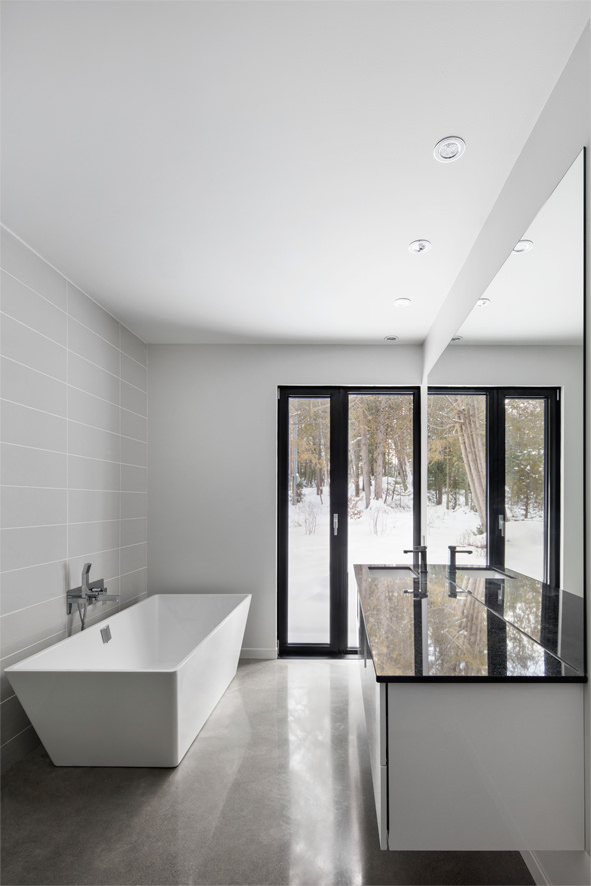Details
Two sisters and the rural landscape
Located in the center of the site, the fence is redefined as a continuous wood band. From the ground, the wood band rises and envelops the living spaces by modulating the openings of the house. The horizontal openings define panoramic views of nature and the lake. Experiences with the landscape are many and varied. And despite the changing views, simplicity and volumetric organization of the house are based on this simple anchorage to the site.
The house naturally takes up this idea of the local landscape so often panoramic, except that the limits of a fence are used here to define the space, creating a place for the program by trapping the substance of landscape in its center. Vernacular typology of the Eastern Townships, the wooden farm buildings and sustainable construction made of field stone, is reinterpreted to define the modern house that is generously opened on the landscape.
Context
The residence is intended to be approached from the south of the site. Upon arrival, the overlapping horizontal bands that extend from East to West highlight the concept of the wooden enclosure. The hemlock paneling shifts from a semi-transparent substance, hiding the inner courtyard at the entrance of the house, to a more conventional opaque envelope. Large horizontal windows reflect the surrounding nature and the nearby lake.
The resulting wooden object is solidly anchored to the ground by a concrete mass that conserves the traces of the hemlock, like fossilized wood. On the western side, a screened porch is oriented towards the view of the sunsets over the lake, while the eastern garage/workshop includes the technical spaces of the house and contributes to defining the interior courtyard, which is sheltered from the wind and acts as a secondary terrace. In contrast to the light wood hemlock, the stone mass at both ends of the house firmly anchors the building to the ground, reminiscent of tree roots that envelope rock masses.
Balance, materiality and reuse
The clients, elderly and tired of accumulating superfluous goods, demonstrated their desire to return to a balanced lifestyle, simple technologies, and materials requiring little maintenance. Thus, the house is distinguished by a reduced footprint,
the absence of a complex mechanical system and its vernacular approach.
No traditional HVAC system is installed in the residence. Only passive principles are proposed to ensure proper ventilation and solar gain control. To minimize heat gain in the summer, variations in relief if the wood band sometimes act as a sunscreen or sometimes as a structural wall or semi-transparent screen. Combined with an envelope and glazing with exceptional insulation, natural ventilation through North-South and roof overhangs carefully oriented according to daylight ensure occupant comfort.
The local hemlock wood which is the main material of the residence is left natural and will gain a gray patina over time. The house will slowly begin to blend in with the natural environment, fitting perfectly into the trees that already inhabit the site. The use of local materials, such as reclaimed barn boards that make up the built-in furniture and the central staircase, provide a direct link to rural buildings that are proof of longevity and durability. Recycled from the agrarian walls of the surroundings, the polished stone floor paving covers the entire ground level and acts as thermal mass. The comfort, simplicity and warmth of the materials chosen are conducive to the family atmosphere desired by the dwellers and subtly accompany the aromas of sugar tarts that simmer in the kitchen!
Client : Anonyme
Localisation : Lac Memphrémagog, Qc
Completion : 2016
Area : 2800 pi2
Budget : N/A
Architect : ACDF Architecture
Structural Engineer : Jean Marc Dugré
General contractor : Constructions Boivin
Photographer : Adrien Williams
2017 – American Architecture Prize, Maison sur le lac

